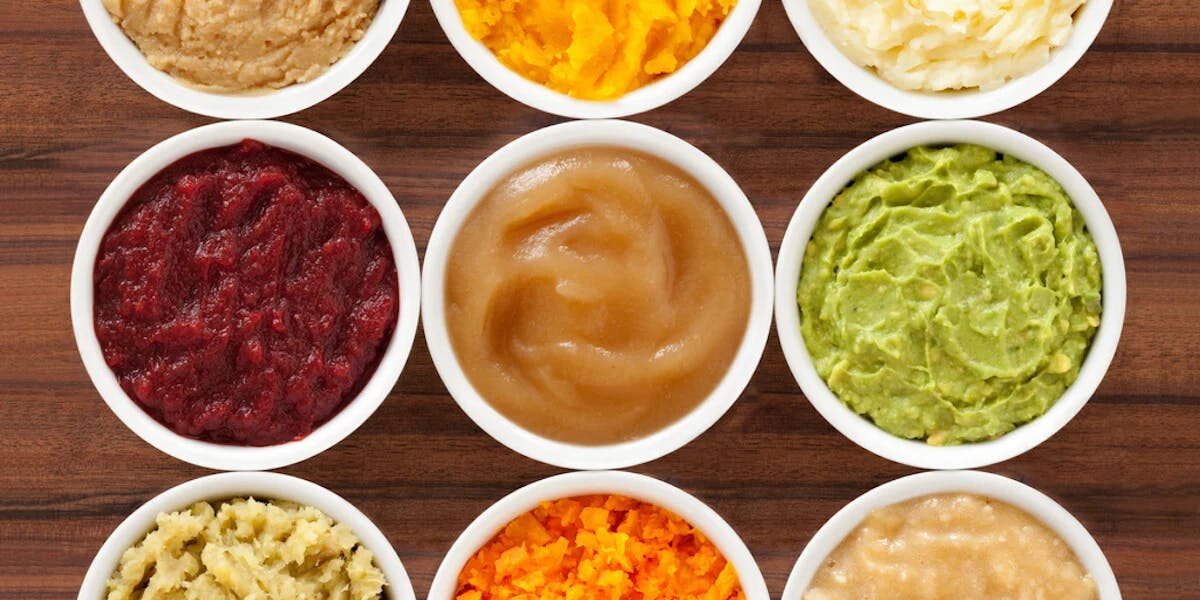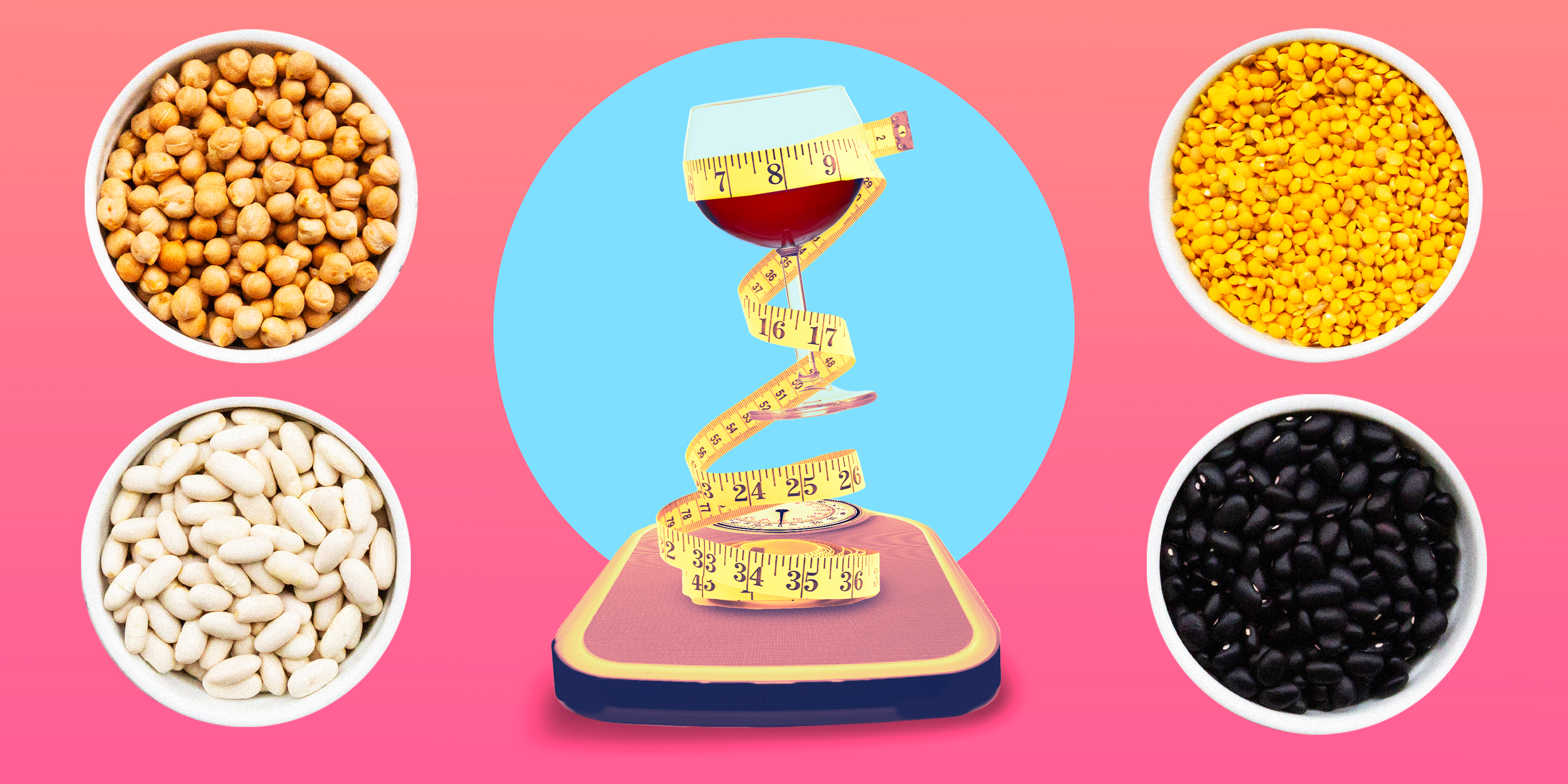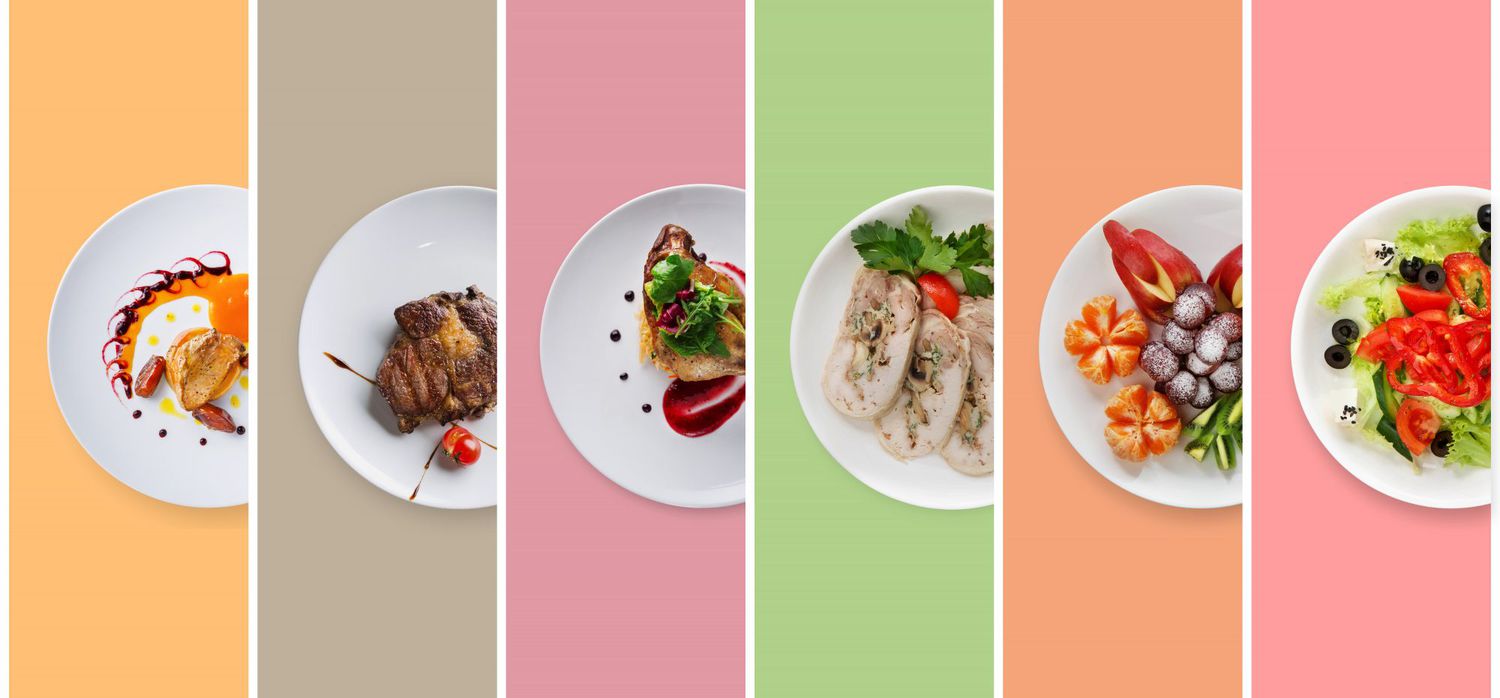
Foods To Eat And Avoid On A Soft Foods Diet
Soft Foods
Dietary advice is commonly provided to patients by their treating physicians when they are recuperating from particular medical procedures or periods of illness. Soft foods suggestions may take a more general or a more specialized approach.
A "soft diet" is widely utilized in therapeutic settings and consists of meals that are both soft and easy for the body to digest. The phrase "soft diet" refers to the type of diet that is frequently used.
Soft Foods
You might be interested in learning about the kinds of meals you should eat and the kinds of foods you should steer clear of, as well as why your doctor chose to put you on a soft diet in the first place if they have advised that you adhere to a soft diet. If your doctor has suggested that you adhere to a soft diet, you may have been given this recommendation.
The article will provide readers with all the information regarding diets that consist of soft foods that you require in order to make a decision that is based on knowledge rather than speculation.
How Do Soft Food Diets Work And Why Are They Prescribed?
Diets that consist of foods that are easy to digest and are prepared in a soft consistency are typically recommended to those who have difficulty digesting foods that have a regular texture or a lot of flavors since these foods are more difficult to break down.
Patients recovering from various ailments or those who have just undergone surgical operations sometimes receive recommendations from medical specialists to follow diets similar to this one throughout their recovery periods.
Soft Foods
Soft food diets are implemented in various settings, including hospitals, long-term care institutions, and even in people's homes. That is because soft foods are more accessible for some individuals to eat. Although they are typically followed for short periods ranging from a few days to a few weeks, one may be obliged to follow the diet for longer, depending on the circumstances around the individual.
Soft diets are regularly prescribed as part of the treatment plan for patients treated for swallowing issues, collectively known as dysphagia. People who are older adults, as well as those who suffer from neurological conditions and neurodegenerative disorders, are more likely to experience dysphagia.
The National Dysphagia Diet (NDD), which was established in 2002 by the Academy of Nutrition and Dietetics, can be split down as follows, depending on the type of dysphagia diet that one is following:
- In the context of dysphagia, "Level 1" of the National Dietary Guidelines for Americans (NDD) refers to a pudding-like consistency that requires very little ability to chew.
- According to the National Dietary Guidelines for Americans (NDD), meals are considered dysphagia-mechanically changed when they are cohesive, watery, semisolid, and need some chewing. That is Level 2 of the NDD.
- The National Dietary Guidelines for Americans (NDD) classify meals at Level 3 as soft but requiring a greater capacity to chew.
- Consumption of any food is acceptable when following a regular schedule.
Soft Foods
A recent study found that changing the texture of food could lead to a lower quality of life and undernutrition, stressing the need for additional research in this field. This study underlines the need for additional research to be conducted in the field of dysphagia, despite the fact that texture-modified diets aim to reduce the risk of aspiration and pneumonia in individuals who have dysphagia.
In addition to people diagnosed with dysphagia, individuals who have recently undergone mouth or jaw surgery that damaged their ability to chew are also encouraged to follow soft diets. That is the case even though they do not have dysphagia.
People who have had significant jaw surgery, dental implant surgery, or the removal of their wisdom teeth, for example, may be obliged to consume a soft diet to expedite their recovery from the surgeries. That is done to minimize the risk of infection.
Patients who have undergone abdominal surgery or are recovering from gastrointestinal illness sometimes utilize soft diets as transitional between complete liquid or puréed diets and regular foods. Soft diets can also be used for people recovering from gastrointestinal sickness, which is done so that the digestive system would have a better chance of healing successfully. People who have had abdominal surgery or are recovering from gastrointestinal sickness are given diets low in fiber and high in liquids.
Persons that are too weak to swallow ordinary foods, like those who are undergoing chemotherapy, as well as people who have lost feeling in their face or mouth or who are unable to control their lips or tongue as a result of a stroke, can also be prescribed soft diets. You can also give soft diets to people who have suffered a stroke, and that is because individuals affected by these disorders have a more difficult time chewing and swallowing typical foods.
Soft Foods
Although the soft food diets used in clinical and home settings might differ, the vast majority of soft food diets used in the short term are low in fiber and have a flavorless consistency. That is done to make digestion more accessible and to ensure that the person taking the diet is comfortable.
It is essential to remember that specific individuals have a dietary requirement that calls for them to consume a diet that is predominately comprised of soft foods for an extended period of time. In these situations, the diet may have a more significant quantity of fiber and a more flavorful composition than the bland diets typically used for the short term.
Summary
Dietary plans referred to as "soft" are distinguished by their emphasis on consuming foods that are easy to chew and digest. Patients with problems swallowing, those who have undergone abdominal surgery, and those with other medical concerns are routinely prescribed these.
Foods To Eat On A Soft Food Diet
Many people look to soft diets as a solution when they cannot tolerate foods with standard textures or highly seasoned foods for various reasons, which can happen for a variety of reasons.
It is essential to differentiate between puréed and soft diets when discussing infant nutrition options. However, puréed meals can be ingested while on a soft food diet, and Puréed diets are a whole different animal than soft food diets.
Soft Foods
The primary emphasis of soft diets has to be placed on meals that are not only soft but also simple to chew and digest.
The following is a list of some examples of foods that can be consumed while adhering to a soft diet:
- Vegetables include cooked carrots that are mushy in the middle after being cooked, green beans, spinach that has been diced, zucchini that has been cooked and seeded, broccoli that has been cooked thoroughly, and other vegetables of a similar nature.
- Fruits such as apples that have been cooked and peeled in addition to applesauce, bananas, avocados, peeled ripe peaches, cooked pears, and other fruits that have been puréed include those that are considered to be fruits.
- Eggs, in their whole and cooked forms, and egg salad. You can also serve eggs in salad form.
- Products such as cottage cheese, yogurt, soft cheeses, pudding, and frozen yogurt, amongst others, are all examples of dairy foods derived from milk and cream. Medical practitioners frequently advise patients recovering from gastrointestinal illness or surgery to consume dairy products with a lower total amount of fat in them.
- Included in the category of grains and starches are foods such as mashed potatoes, sweet potatoes, butternut squash, cooked cereals such as cream of wheat, soft, moistened grains such as farro or barley, moistened pancakes, soft noodles, and other foods with a similar consistency.
- Meat, poultry, and fish dishes such as wet chicken salad, soft tuna, or chicken salad that has been coarsely chopped or pulverized (without chopped raw vegetables or fruit like celery or apples).
Soft Foods
- Soups that have been puréed or based on broth and feature veggies cooked until they are tender may be referred to as "tender" soups.
- The items are in the "miscellaneous" category: gravies, sauces, seedless jams and jellies, nut butter without pieces, and seedless jellies.
- Various beverages are available, including water, tea, protein shakes, and fruit smoothies.
It is essential to remember that a wide selection of soft food diets is available, each of which has its unique twist to accommodate patients trying to recover from a specific illness. Certain people with additional constraints might not be able to handle particular foods for various reasons, and these causes could include allergies or intolerances.
It is in your best interest to seek the advice of a certified dietitian or your healthcare provider if you are on a soft diet and have questions regarding the foods you are permitted to consume. If you are on a soft diet and have questions regarding the foods you are allowed to drink, it is in your best interest to do so.
Summary
It is possible to relish cooked fruits and vegetables, efficiently chewable proteins, and more tender carbs when adhering to a diet of soft foods.
Soft Food Diet Foods To Avoid
Soft Foods
If you are following a diet consisting mainly of soft foods, there are many different kinds of food you should steer clear of. It is appropriate to limit foods that are tough to chew and digest and things that are difficult to digest in general. Consumption of foods that are either very acidic or very spicy is often not allowed under any circumstances.
On soft diets, you are often not allowed to consume any of the following foods, including any or all of them:
- Veggies: raw veggies, deep-fried vegetables, vegetables with seeds or rinds
- The term "fruits" refers to a wide variety of edible plant foods, including fresh fruits (with a few notable exceptions like avocados and bananas), fruits with skins and seeds, dried fruits, and very acidic fruits like lemons and limes.
- Products created from milk and other sources of dairy, such as aged cheeses, cheeses that contain nuts or dried fruit, and yogurts that have components such as chocolate or almonds added to them. Examples of these products include cheeses and yogurts.
- Hard crackers, loaves of bread that are chewy or crusty, pieces of bread and grains that are high in fiber, such as seeded slices of bread and shredded wheat, French fries, popcorn, and other foods similar to these are examples of grains and starches.
- Meat, poultry, and fish: chewy slices of beef, fried fish or chicken, whole pieces of meat or poultry, high-fat processed meats like bacon, shellfish, soups or stews including challenging portions of beef, and whole cuts of meat or poultry. Meat, poultry, and seafood.
Soft Foods
- The following are some foods that are high in fat: nuts, seeds, coconut flakes, and crunchy nut butter.
- Several Distinctive Items, Including Seeded Jams and Jellies, Chewy Candies, and Various Other Sugary Treats
- Meals are irritating or irritating, such as chili peppers and tomato sauce. Foods that stimulate gas production, such as cabbage and beans and tabasco sauce, and meals that are irritating or irritating, such as spicy dishes.
- It is possible that the use of some beverages, such as alcoholic beverages and beverages containing caffeine, will need to be restricted due to the medical condition currently being treated.
It is essential to remember that your healthcare practitioner may advise you to adhere to additional restrictions in light of the nature of your medical condition. That is something you should keep in mind at all times. You must have a thorough understanding of both the diet that has been suggested for you and the particular dietary requirements that you have.
Summary
It is best practice to avoid meals that are both difficult to chew and digest while following a diet that consists primarily of soft foods. Additionally, it is best practice to avoid spicy and acidic foods when following such a diet.
Soft Food Diet Meal And Snack Ideas
Soft Foods
Sticking to any overly restrictive diet can be difficult. Still, it can be challenging when many things high in nutrition, such as raw fruits and vegetables, are prohibited from the diet.
Because there is such a wide variety of options, people who adhere to soft diets can continue to delight in a wide variety of delectable meals and snacks even though they are on their diets.
People who adhere to soft diets have a few alternatives accessible to them when it comes to deciding what sorts of foods they should consume for each of their meals. These options include the following, among others:
Breakfast Ideas
- This dish features eggs that have been scrambled in addition to avocado that has been sliced and served.
- The dish was made up of the cream of wheat topped with cashew butter with a creamy consistency and peaches that you had cooked.
- This quiche does not have a crust; the inside is made of eggs, goat cheese, spinach, and butternut squash. It is baked until the filling is set.
- A parfait begins with a layer of plain yogurt as the bottom layer, then has layers of canned peaches or bananas, seedless blueberry jam, and almond butter added on top, and finally has another layer of plain yogurt as the final layer.
Lunch Ideas
Soft Foods
Lunch ideas for soft diet meals
- A salad made with chicken or tuna but which does not contain any vegetables in its composition.
- The soup is prepared with chicken, tender chicken that has been shredded, soft noodles, and cooked vegetables, and it is served with a few pieces of each of these ingredients.
- The salad includes couscous, feta, and vegetables cooked separately and served with it.
- Scrumptious burger piled high with velvety avocado and juicy fish.
Dinner Ideas
- A meatloaf made with either ground beef or tofu, which, after being baked, is served on mashed sweet potatoes as an accompaniment.
- Beets accompany grilled flounder and carrots braised until they are fork-tender, and mashed potatoes seasoned with cheese and served alongside the dish.
- Chicken breasts, rice, and green beans are prepared for serving after being cooked.
- Shepherd's pie topped with ground beef and prepared with turkey as the bottom layer.
People following a diet considered to be somewhat restrictive may find that consuming one or more snacks at various periods during the day is more convenient. That is in addition to their three primary meals, considered the most important meals.
Some potential examples of snacks include the following:
Soft Foods
- Cottage cheese is accompanied by fruit cooked or preserved in some other manner to achieve a softer consistency.
- It is topped with apple yogurt that has been made with apple puree, cinnamon, and cooked apples that have been peeled.
- A liquid preparation that is a blending of vegetables and grains.
- Thoroughly mixed smoothies that contain fruit, protein powder, and nut butter in a form that is smooth and does not contain chunks of any kind are referred to as "completely combined" smoothies.
- egg salad made with mashed avocado
- A rich loaf of pumpkin or banana bread, accompanied by a spread that is as silky as it is smoothly made with almond butter.
- Soups made entirely of vegetables, such as butternut squash soup, are pureed and blended into a smooth consistency.
- Banana boats are filled with natural peanut butter that has an exceptionally silky texture.
Each meal and snack must be as well-balanced as possible and contain foods high in protein, particularly for people who have recently undergone surgery or have increased nutrient requirements, such as cancer. People who have recently undergone surgery or have increased nutrient requirements must eat foods that contain high protein. Consuming foods high in protein is especially important for people who have recently undergone surgery or have increased nutrient requirements. That is because these individuals need their nutrients more than most.
Soft Foods
Summary
Even when adhering to a soft diet, it is not difficult to consume meals and snacks that are good for you, pleasing to the mouth, and healthy for you. In the healing process and to promote general health, it is essential to include foods high in nutrients in both the primary meals and the snacks eaten.
Here Are Some Helpful Tips For People On Soft Diets
Even though sticking to a diet that consists solely of soft foods can be difficult, the following suggestions might make it slightly simpler to stick to such a diet:
- Make the decision that is in your best interest by opting for the available wholesome choices. It is essential to ensure that you are consuming a sufficient amount of nutrient-dense foods like vegetables, fruits, and proteins, even though it may be tempting to consume soft, sugar-laden goods like cakes and pastries. For example, cakes and pastries contain a lot of sugar. It is of the utmost importance that you ensure you get enough of these foods in your diet. Your health will benefit more from a diet that includes some of these foods and beverages as standard components. You should look for nutrient-dense options across a wide range of food categories and add those to your shopping cart as you discover them.
- You should season the food that you are currently eating with something. It is common practice to enhance the overall appeal of a dish by adding a variety of flavorings, such as herbs and other spices that do not dominate the flavor profile of the word.
Soft Foods
- There is no possible way to overstate the significance of the protein. Everyone should ensure they are getting enough protein in their diet, but those who are recovering from surgery or undernourished especially need to make sure they are getting enough. Every single meal and snack ought to contain some amount of protein.
- Consume an appropriate amount of food at proper intervals. It is recommended that when one is on a soft diet, rather than consuming a few large meals, one should consume several smaller meals spread out throughout the day. That is because it is easier for the body to digest food in this manner. That is because when food is broken down into smaller portions, it is significantly more straightforward for the body to digest.
- As you methodically work your way through the meal, make sure to chew your food and savor each bite thoroughly. Many people on soft diets, such as those recovering from stomach surgery or those with neurological illnesses, find it essential to chew their food thoroughly and take their time while eating. That is especially true for those on soft diets, and this is because diets low in fiber and protein are easier on the digestive system. Maintain an upright posture and take one or two sips of your beverage between each of your bites to break up the monotony of the eating process.
- Before you start preparing any of your meals, make sure you plan how you will approach each one. It can be challenging to devise meals that are suitable for a diet that consists of soft foods that have been processed by machinery. It is possible to alleviate feelings of stress and make mealtimes easier to manage by planning and to prepare meals in advance, which requires setting aside some time.
Soft Foods
- Always check to see that you have easy access to all of the appliances in your home. To facilitate the preparation of mouthwatering dishes that are by the principles that underpin the soft diet, common kitchen appliances such as blenders, filters, and food processors can be utilized at home in the kitchen.
Soft diets are typically utilized as transitional diets for shorter periods until a person is ready to begin eating a diet with a more typical consistency once again. In other circumstances, soft diets might become a permanent lifestyle choice.
A skilled dietician can provide you with any additional information pertinent to your circumstances. And your healthcare provider will advise you on how long you should adhere to a diet consisting of soft foods.
Suppose you have any questions or concerns about following a diet consisting of soft foods or how to transition back to a diet consisting of foods with regular consistency. In that case, you should seek the advice of a medical professional. That is especially important if you are unsure how to make the transition. If you are unsure how to make the transition, this is especially important for you to remember.
Summary
People who follow diets that primarily consist of soft foods would be wise to choose nutritious foods, emphasize protein, plan, eat frequently but in smaller portions, and take their time when eating.
The Bottom Line
Soft Foods
Diets that primarily consist of soft foods are frequently recommended to patients by medical professionals to facilitate the recovery process following medical procedures or illnesses and facilitate easier chewing and digestion of meals. Diets primarily consisting of soft foods are also frequently recommended to patients to promote recovery following medical procedures or diseases. That is done to speed up the healing process after a medical procedure or an infection has taken its toll on a patient.
When following a diet that consists of soft foods, it is essential to select foods that are soft and easily digested. Additionally, it is necessary to avoid foods that are difficult to chew or digest when it comes to maintaining a diet that consists of soft foods. Foods with a high potential for irritating the mouth and throat, such as those with a very spicy flavor, should also be avoided, including foods with a high potential for causing mouth and throat pain.
It would be best if you stayed on the diet of soft foods until your doctor tells you that you are ready to transition back to your regular diet. This diet has been recommended to you by a healthcare professional. That is because a diet that consists of soft foods is used to facilitate healing, even though adhering to such a diet can be challenging. That is because soft foods are easier on the digestive system.











